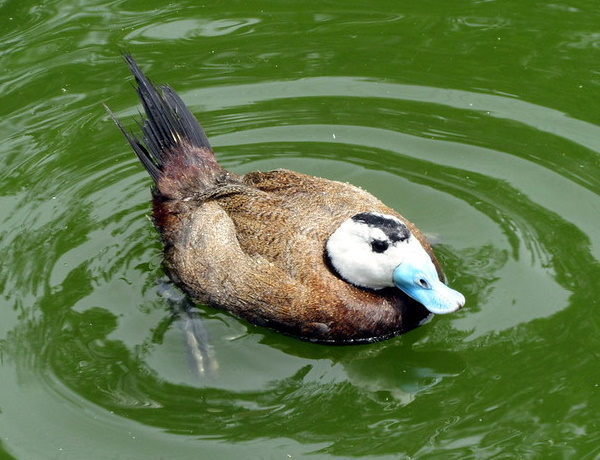Ducks have evolved a specialized set of physical attributes allowing them to become some of nature’s most efficient waterfowl. So, what’s the bill for all that?
Domestic Crested Ducks
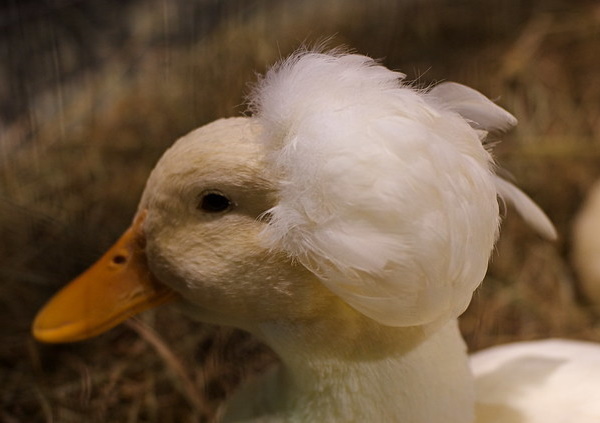 (images via: bobistraveling and Tim Pierce)
(images via: bobistraveling and Tim Pierce)
Crested Ducks have been known for centuries though only recently have they been bred to highlight this curious and interesting feature. The crest is a natural mutation associated with a certain type of skull deformity. Fatty tissue pushes up through the top of the duck’s skull, and fluffy feathers then sprout from this tissue. It sounds a bit gross but the results cause no harm to the ducks unless the crest is so large it blocks their vision.
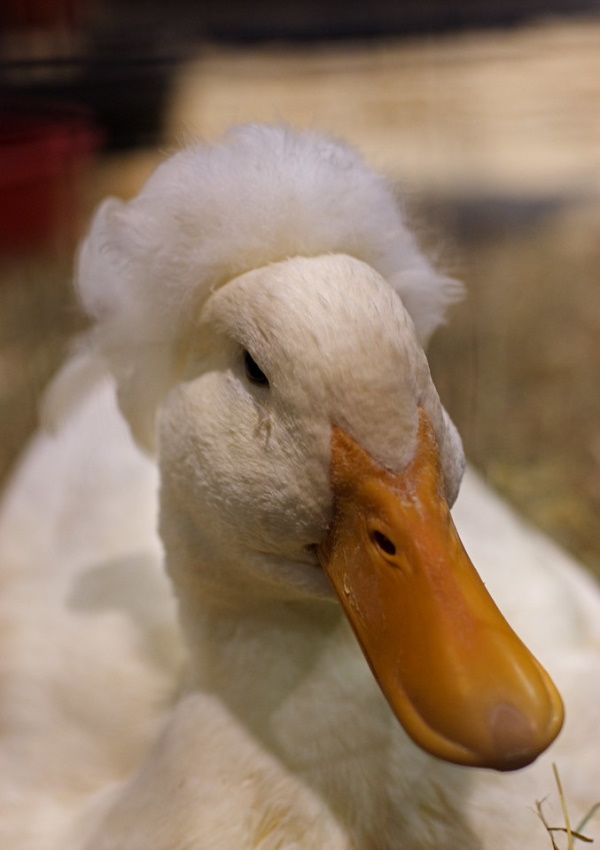 (image via: Tim Pierce)
(image via: Tim Pierce)
Also known as Le canard Huppe’ in France and Belgium or as Ciuffate in Italy but not related to the Crested Ducks of South America, Domestic Crested Ducks are a challenge for breeders as the mutation has a lethal component: when a pair of Domestic Cresteds are bred together, half of the ducklings will sport crests, a quarter will not, and a quarter will not hatch from their eggs. The dignified white Domestic Crested above displays a hint of regal dignity in the fashion of 18th century aristocrats or, perhaps, George Washington.
Paradise Shelduck
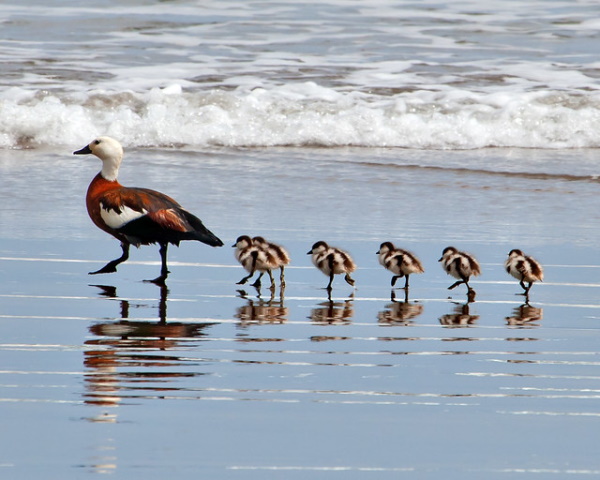 (image via: Dave Young)
(image via: Dave Young)
The Paradise Shelduck (Tadorna variegata) is a large, goose-sized duck native to New Zealand. Relatively uncommon before the island nation was colonized and settled by Europeans, Paradise Shelducks have thrived as forested areas were cut down and replaced by meadows and pastures. Why should ducks care about land use? In the case of the Paradise Shelduck, land is where they spend the majority of their time flocking and grazing.
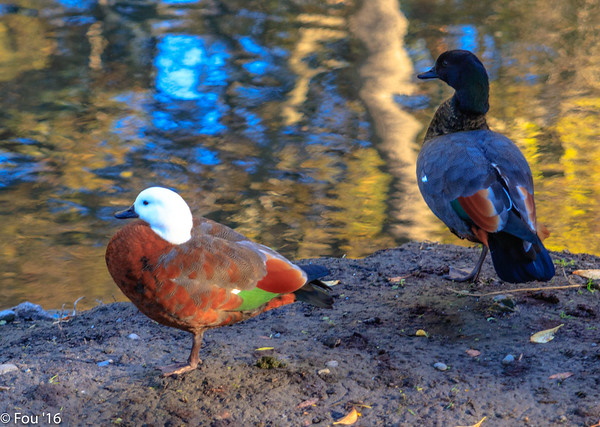 (image via: Murray Foubister)
(image via: Murray Foubister)
New Zealand isn’t entirely a paradise for the Paradise Shelduck, however. Another factor in their population growth is that hunting groups and associations have been involved in provisioning ponds as a method of boosting the birds’ numbers. I guess every silver lining has its cloud!
Knob-billed Duck
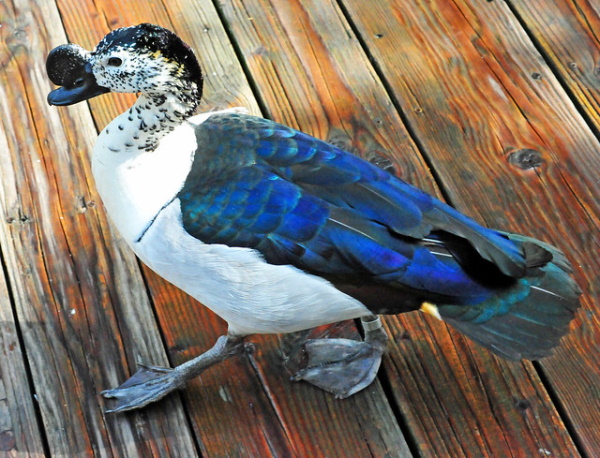 (image via: Heather Paul)
(image via: Heather Paul)
The Knob-billed Duck (Sarkidiornis melanotos) is one of the world’s largest ducks besides being one of the most distinctive… the males, at least. Size-wise much larger than females of the species, male Knob-billed Ducks sport a bulbous “knob” on the upper surface of their beaks. The knob doesn’t affect their ability to gather food and its function appears to be solely for courtship displays.
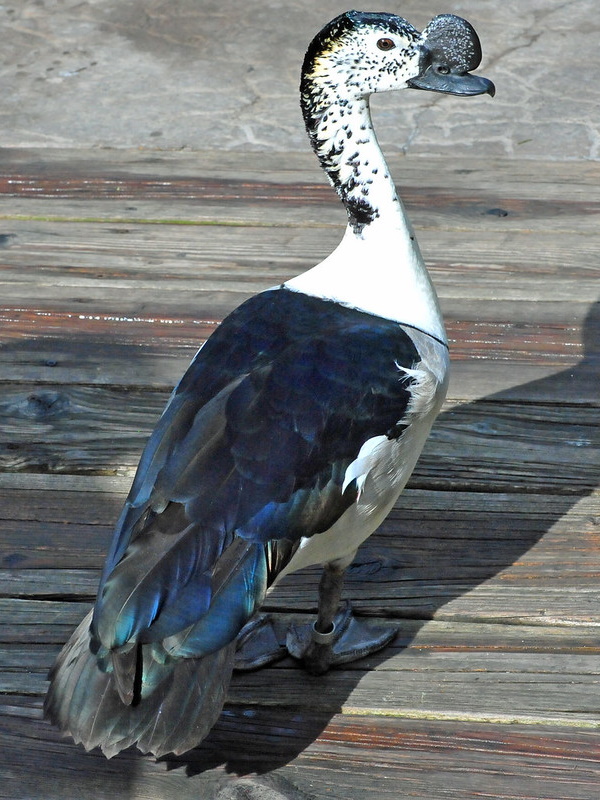 (image via: Heather Paul)
(image via: Heather Paul)
Knob-billed Ducks are found in South America, sub-Saharan Africa and eastward into Southeast Asia though some biologists classify the slightly smaller New World variety as separate “Comb Ducks”. Two more fun facts about Knob-billed Ducks: females sometimes lay their eggs in a communal nest that may contain up to 50 eggs, and instead of quacking these mainly silent ducks emit a low “croak” when disturbed.
